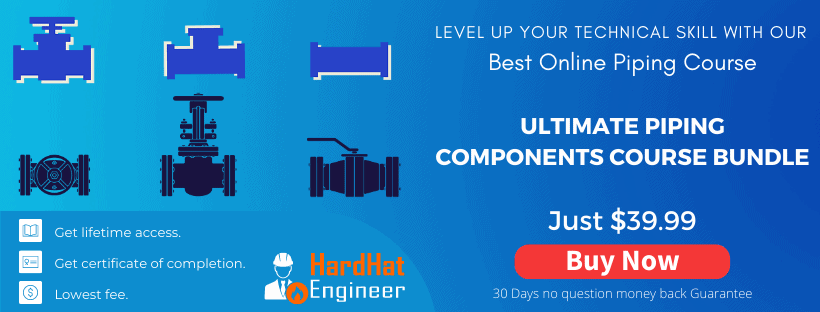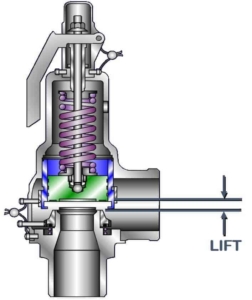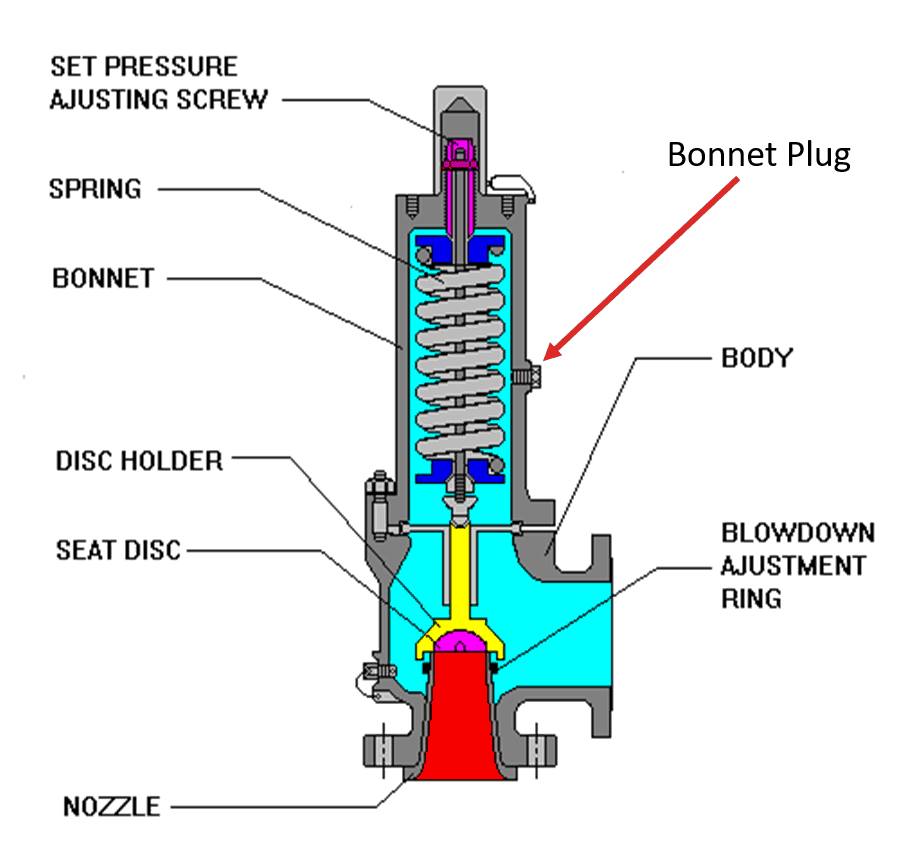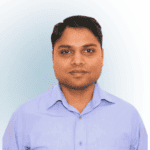A pressure relief valve is a safety device designed to protect pressurized equipment or system during an overpressure event or in the event of a vacuum.
But what is overpressure? An overpressure event is a condition in which pressure inside the equipment or piping system increases beyond the specified design pressure or maximum allowable working pressure (MAWP). This pressure can damage the system, property, and personnel if not relieved. Similarly, an unwanted vacuum is also dangerous for the system.
The primary purpose of a pressure Relief Valve is to protect the life and property by venting fluid from an over-pressurized system. furthermore, the vacuum relief valve ensures that a vacuum-like situation does not occur in the system by allowing air inside the system.
There are three types of pressure relief devices:
- Reclosing-type pressure relief devices
- Non-reclosing type pressure relief devices
- Vacuum relief devices
Reclosing Type Pressure Relief Valve
A reclosing-type pressure Relief Valve is designed to close automatically after the relief operation. Relief valves, Safety valves, and Safety relief valves are reclosing type Pressure Relief Devices.
Relief valves
A relief valve is a gradual lift pressure relief device actuated by inlet static pressure. An opening is proportional to the increase in inlet pressure over the opening pressure of the valve.
It may be provided with an open or enclosed spring housing, also known as a bonnet. Here in the image, you can see the open spring-type bonnet. The opening pressure at which the valve acts can be adjusted by changing the load on the spring.
Here in the image, you can see the enclosed spring-type Relief valves for closed discharged applications. Relief valves are commonly used with non-compressible liquid systems in chemical, petrochemical, and oil & gas industries.
Valve Quiz – Test yourself, Take This Quiz
Safety valves
A safety valve is a rapid opening or pop-up action pressure relief valve actuated by inlet static pressure. Safety valves are used primarily with compressible gasses. Particularly for steam and air services.
Safety valves are classified according to the lift of the disk and bore of the valve. Types of safety valves are low lift, full-lift, and full-bore safety valves.
- In a low-lift safety valve, the disk lifts automatically such that the actual discharge area is determined by the position of the disk.
- While in the case of a full lift safety valve, the disks lift automatically such that the actual discharge area is not determined by the position of the disk.
- The full-bore safety valve has no protrusions in the bore that can restrict or work as a controlling orifice to reduce the flow from the valve.
Safety Relief Valves
- Safety Relief Valves have a combined characteristic of the Safety valve & Relief Valves. It performs as a safety valve, open by pop-up action when used in a compressible gas system and performs like a relief valve, opens in proportion to the overpressure when used in liquid systems.
- Different types of Safety Relief Valves are used in process piping
- These valves are classified as conventional type, pilot operated, balanced bellows type, power actuated, and temperature actuated type.
Pressure Relief Valve
The conventional pressure relief valve is characterized by a rapid pop action or by opening proportionally to the increase in pressure with respect to the opening pressure of the valve.
The main parts of the Conventional pressure relief valve are a body, bonnet, disk, disk holder, seat, and spring. Based on the seating material, conventional pressure relief valves are classified as metal seated valves and soft seated valves. See the image for clarity.
Image – Piping Engineering
During normal operating conditions, the pressure at the inlet is below the set pressure, and the disk remains seated on the nozzle, preventing flow through the nozzle.
The working principle of a conventional spring-loaded pressure relief valve is based on the balance of force. That means the spring load will keep the disk on the seat till the system pressure is less than the spring force.
This pressure is known as set pressure. The disk remains seated on the seat in the closed position till the inlet pressure exceeds set pressure and overcomes the spring force. Spring force closes the valve when the inlet pressure is reduced to a level below the set pressure.
Conventional pressure relief valves are used for applications where an excessive variable or built-up back pressure is not present. Back-pressure will directly affect the valve performance. A pressure built-up on the outlet side of PSV is known as back pressure. You will learn more about back pressure in the lecture on bellows type PSV.
Advantages of Conventional PRV
- It Can be used in all kinds of Gas and Liquid services
- Suitable for high pressure and temperature services
- The low cost compares to other types
Disadvantages of Conventional PRV
- Backpressure can affect the functioning of the valve
- Spring is subjected to corrosion if service material is corrosive
- Not suitable for hazardous services
Vacuum Relief Valve
A simple vent can Provide protection against vacuum. Our home water storage tanks are fitted with this kind of simple vent. But in the industrial tank, which stores various chemicals and hydrocarbons, this simple vent may release vapor of these products in an atmosphere, which can be odorous, toxic, and potentially hazardous. To avoid such release, special vacuum relief valves are used.
Pressure Vacuum Relief Valve -PVRV
The pressure vacuum relief valve or pressure-vacuum vent is designed to maintain a tight seal until system pressure or vacuum exceeds the valve’s set pressure. When overpressure occurs, the pressure lifts the disk just like a safety valve, allowing vapors to pass.
When a vacuum occurs, the vacuum lifts the disk, lets the air inside, and breaks the vacuum. It is like the breathing of a tank. This PVRV arrangement prevents continuous vapor loss to the atmosphere as it opens only when the set pressure is reached. You can see the image for a better understanding.
Click here to learn about Other Types of Valve.
Are You Piping Components Master?






